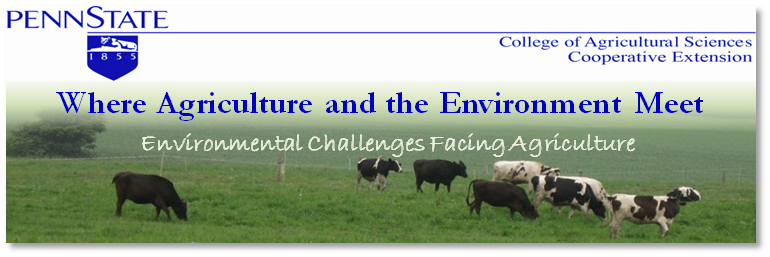Barnyards are in need of attention on many dairies and future regulations are aiming to make sure that attention is paid. The new Pennsylvania Manure Manual has not yet been released by the Department of Environmental Protection, but all indications are that barnyards are going to receive greater attention than they have in the past. Future regulations on manure management and cropping practices have been discussed previously, but barnyards are a major concern of environmental regulators. Barnyards are often areas that are not suited for cropping, get too much traffic for a ground cover to really take hold, and are just not a priority for maintenance or improvement on most farms. However, from and environmental standpoint, barnyards are a major source of manure runoff to streams. Heavy rains can easily flush manure from barnyards into local streams if there is not a system in place to prevent this. Also, from an animal health standpoint, improperly maintained or designed barnyards can contribute to mastitis and hoof health problems.
Barnyards can be dirt lots or paved areas. Barnyards that are dirt can quickly become mud pits. Standing in wet conditions, like a muddy barnyard, can soften hooves leading to hoof problems and lameness that can negatively impact milk production. Also, if animals are left in barnyards long enough during the day they will eventually lay down exposing the teats to environmental mastitis pathogens. Although environmental mastitis is generally easier to treat compared with contagious mastitis it can still lead to a great deal of lost production and income before it is controlled. Lastly, the cleaner the barnyard is kept the cleaner the cows will be at milking, which means less cleanup at milking.
Concrete barnyards can be better than dirt barnyards, but only if maintained. Uneven concrete can lead to injury and hoof problems. Also, unless concrete is poured so that there is good drainage it can become just as wet and sloppy as a dirt barnyard.
There is cost share money available for barnyard improvements through Natural Resources Conservation Service, county Conservation Districts, and private groups. The following are some areas to consider about your own barnyard.
- Is the barnyard cleaned regularly? Scraping barnyards weekly will prevent hoof problems and eliminate the potential runoff of manure from the barnyard.
- Are there curbs on the concrete barnyard? Curbs keep manure from running off the barnyard into local waterways.
- Is there a system to collect runoff from the barnyard? If the barnyard is curbed, there needs to be a drain so that the barnyard doesn’t become a pool. However, the collection of rain water and other material from the barnyard needs to be treated as any other manure laden runoff and should be run through some type of filtration or storage system.
- Is excess rainwater running into the barnyard? Roof gutters and down spouts should be designed to divert rainwater away from the barnyard into a filtration area.
In short, proper design of rain gutters and downspouts to divert rain water away from the barnyard, a proper filtration or storage system for collection of runoff from the barnyard, and scraping the barnyard to keep manure from building up will protect local waterways and prevent herd health issues. For more information on this issue visit the Penn State Agriculture and Environment Center at www.aec.cas.psu.edu to watch a webinar on barnyards, exercise lots and water quality.


